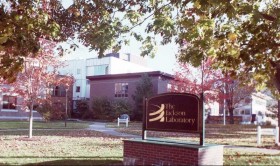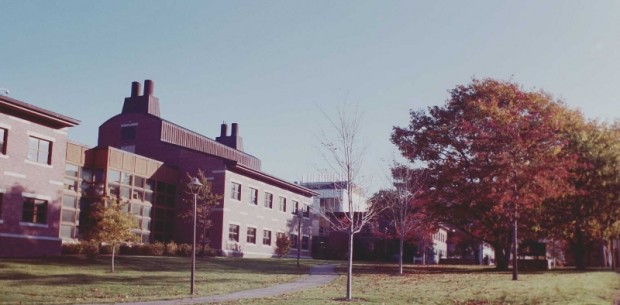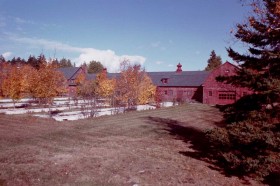is an independent nonprofit genetic research center located in Bar Harbor. Employing over 1,200 people in Maine in 2011, it conducts research on cancer and other diseases. Its research staff of more than 200 includes Ph.D.’s, medical doctors, and doctors of veterinary medicine.
The world’s largest mammalian genetic research facility, the Laboratory also serves as the provider of critical genetic resources and as a center for training present and future scientists.
Dr. Clarence Cook Little, a Harvard-trained geneticist and former president of the University of Maine, founded the Laboratory in 1929 as a cancer research center. His study of cancer convinced him that mouse models held the key to understanding the genetic basis of human development, diseases, and disorders. In 1956 Dr. Earl Green, a researcher of laboratory mice, succeeded Dr. Little as Director, serving until 1975.
The Lab was named for Bar Harbor summer resident Roscoe B. Jackson who helped provide funding for its creation. Jackson was General Manager of the Hudson Motor Car Company in Detroit, Michigan.
The institution’s substantial collection of mice, with carefully documented genetic histories, is vital to its research and provides over $30 million in income through international sales of the mice to 12,000 laboratories in more than fifty countries.
The Lab survived the disastrous fire of 1947 that scorched Mount Desert Island and destroyed the mice. The collection was reestablished by retrieving mice sent to other institutions.
Jackson was designated a Cancer Center by the National Cancer Institute in 1983. Tragically, a second fire in 1989 destroyed more than half the collection, requiring another effort at recovery.
Jackson Lab is one of only nine research centers supported by the National Cancer Institute for basic cancer research. It offers education and training in preclinical mouse models for human cancers and their use in research. With an annual budget of nearly $215 million in 2011 and a nationwide staff of 1,368 employees, it is a major economic development resource.
Additional resources
The Jackson Laboratory. http://www.jax.org/
Butler, Joyce, collector. “Wildfire Loose” interview, April 1977. (Cataloger Note: Contains interview with Mr. and Mrs. Allen Salisbury about the 1947 forest fires in Maine and the burning of the Jackson Memorial Lab in Bar Harbor) [University of Maine. Maine Folk Life Center]
Green, Earl Leroy. Papers 1937-1975. (Cataloger Note: The Earl Green collection consists of papers of Dr. Earl Green and his wife and associate, Margaret C. Green. Included are personal papers from graduate school, teaching papers from Ohio State, research materials from Jackson Lab, and before, Jackson Lab business papers, and reprints of articles by Jackson Lab’s staff and others on genetics.) [University of Maine, Raymond H. Fogler Library, Special Collections]
Holstein, Jean. The First Fifty Years at the Jackson Laboratory. Bar Harbor, Me. Jackson Laboratory. 1979.
Paigen, Kenneth. The Jackson Laboratory. New York. Newcomen Society of the United States. 1999. [University of Maine, Raymond H. Fogler Library]
Rader, Karen A. Making Mice: C.C. Little, the Jackson Laboratory, and the Standardization of Mus Musculus for Research. 1995. (Thesis (Ph. D.)–Indiana University, 1995) [University of Maine, Raymond H. Fogler Library, Special Collections]
Roscoe B. Jackson Memorial Laboratory. Annual Report – Roscoe B. Jackson Memorial Laboratory. Bar Harbor, Me. Roscoe B. Jackson Memorial Laboratory [University of Maine, Raymond H. Fogler Library, Special Collections: 1936 ; 1955/56 – 1962/63; Bangor Public Library: v.27-36, v.46-55, msg v.48]




